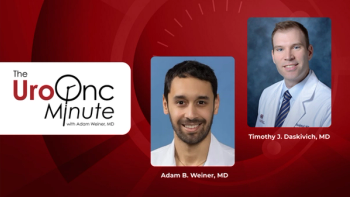
Growth factors may play a role in vasectomy success
Growth factors may play a role in the micro-recanalization that can occur after vasectomy.
Key Points
New Orleans-Growth factors may play a role in the micro-recanalization that can occur after vasectomy, suggesting not only a mechanism for vasectomy failure, but also a potential treatment, according to findings in an animal model that were reported at the American Society for Reproductive Medicine annual meeting here.
In a study by Freund et al (J Androl 1989; 10:120-32), specimens from 20 men with vasectomy reversals demonstrated microcanals in 18 patients (27 of 40 specimens), and spermatozoa or sperm heads were detected within the microcanals in one-third of those specimens. The microcanals were simple cuboidal epithelium with microvilli on a basement membrane and surrounding smooth muscle, which essentially created a micro vas deferens, Dr. Stahl explained.
Dr. Stahl and colleagues tested this hypothesis in a rat model of unilateral vasectomy. Sham surgery on the contralateral side served as controls, and the animals were sacrificed at 2, 8, and 12 weeks and studied at these time points.
Segments of the vas deferens were taken from both sides for mRNA and protein isolation and for pathologic examination. Real-time polymerase chain reaction was used to test the relative expression of transcripts of seven common growth factors and three receptors. Enzyme-linked immunosorbent assay (ELISA) was performed for growth factors with positive PCR findings to determine whether increased transcription resulted in increased translation.
Histologic examination revealed the presence of microcanals in two of 18 rat specimens, one from the abdominal and one from the testicular end. PCR showed a 12-fold increase in platelet-derived growth factor-beta (PDGF-beta) mRNA, a six-fold increase in PDGF-beta receptor, an 11-fold increase in PDGF-alpha, a seven-fold increase in PDGF-alpha receptor, and a nine-fold increase in transforming growth factor-beta (TGF-beta). All increases were statistically significant over controls (p<.05), and elevations were seen at all time points, Dr. Stahl reported.
Sustained increases
Smaller increases in vascular endothelial growth factor and epidermal growth factor were observed, while insulin-like growth factor-1 was unchanged. There were modest decreases in fibroblast growth factor and the epidermal growth factor receptor. The elevations in the growth factors were sustained, particularly for PDGF-beta, PDGF-beta receptor, and TGF-beta.
The testicular ends of the vas demonstrated trends toward higher levels of growth factor expression compared to the abdominal ends, although only PDGF-beta reached statistical significance. Protein analysis revealed a significantly increased expression of PDGF-beta protein, as determined by ELISA, Dr. Stahl added.
"The rat vasectomy model shows microcanal formation that is analogous to what's been reported in humans. There is a sustained local upregulation of TGF-beta, PDGF-beta, and the PDGF-beta receptor at the surgical site, and the increase is greatest on the testicular side of the vas deferens," Dr. Stahl concluded. "Our findings provide information about a possible mechanism of vasectomy failure and suggest a possible role for aiding vasectomy reversal with these growth factors."
Newsletter
Stay current with the latest urology news and practice-changing insights — sign up now for the essential updates every urologist needs.
















